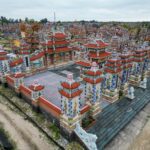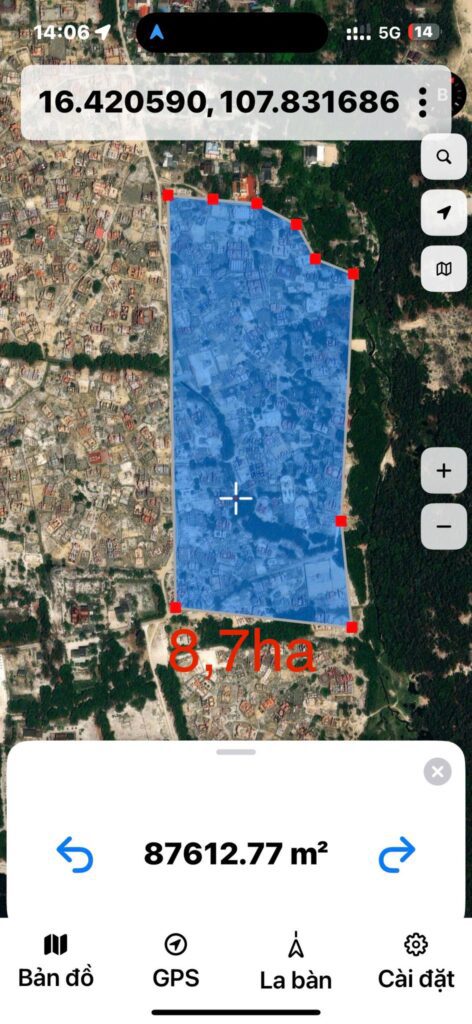
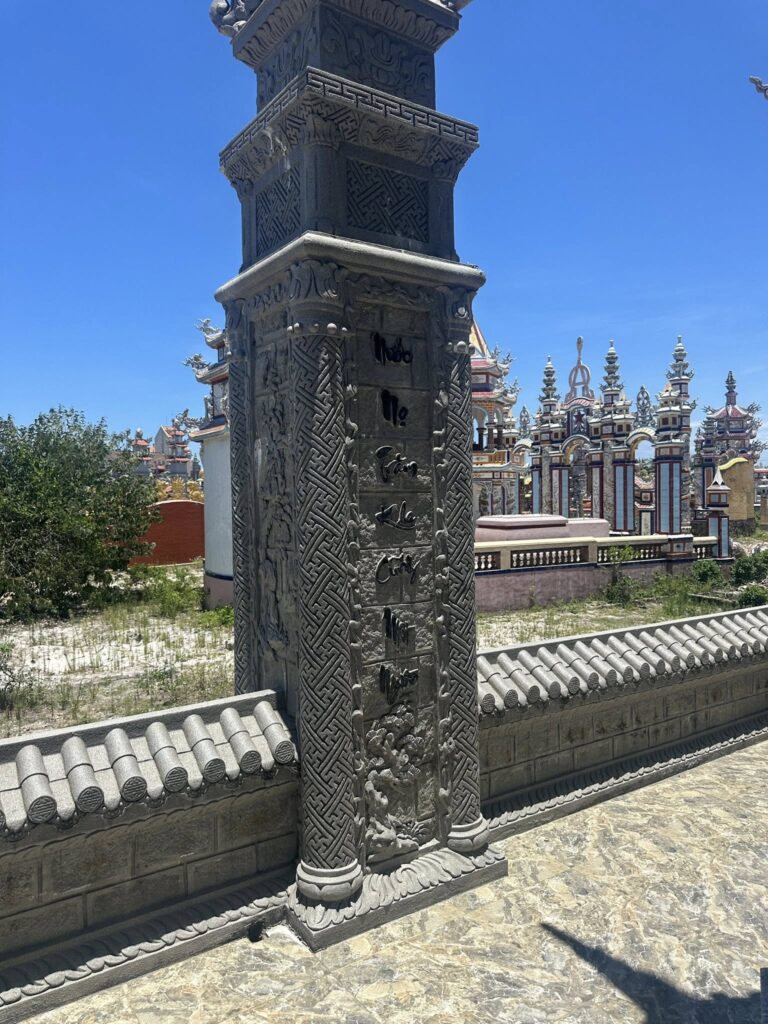
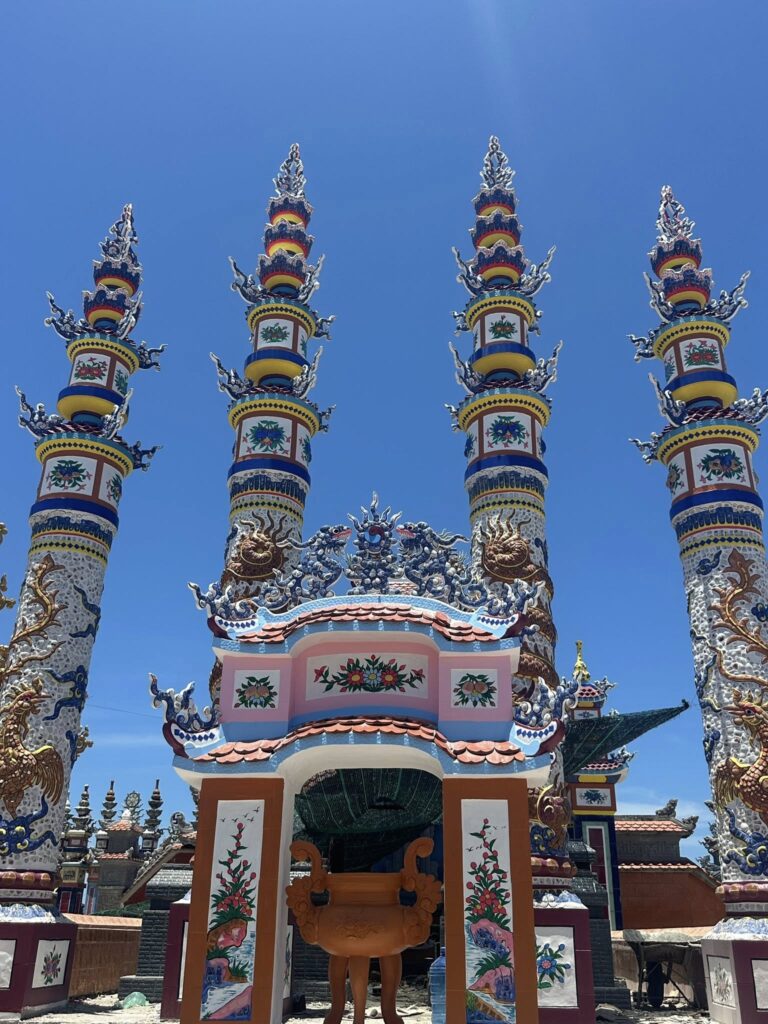
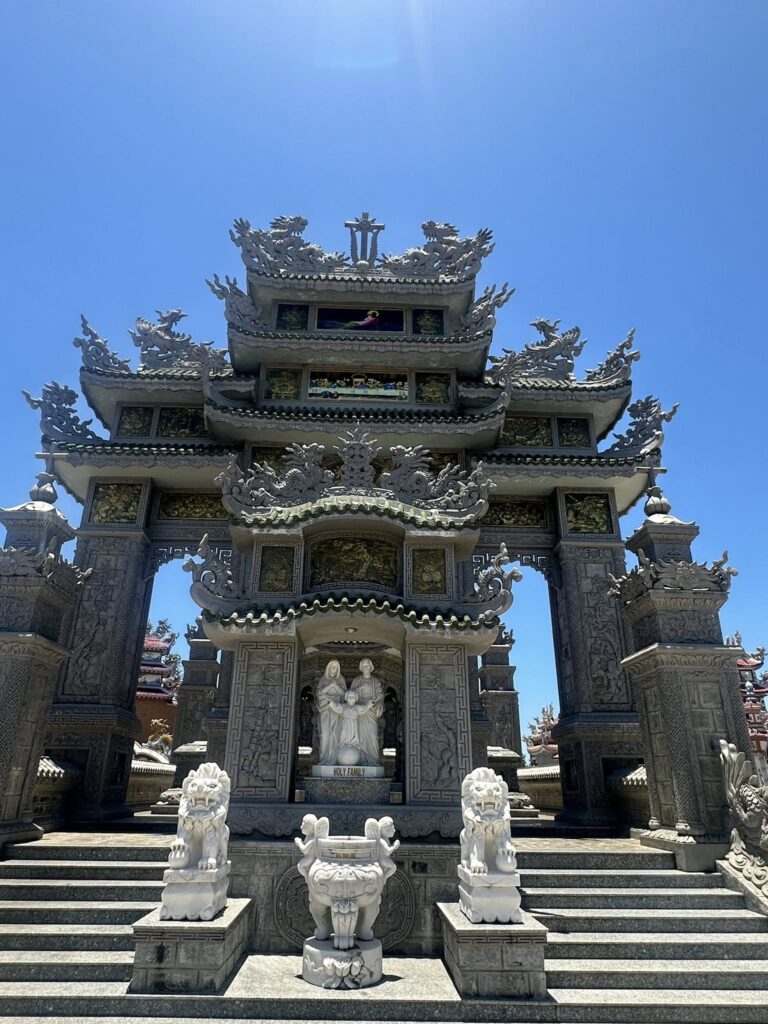
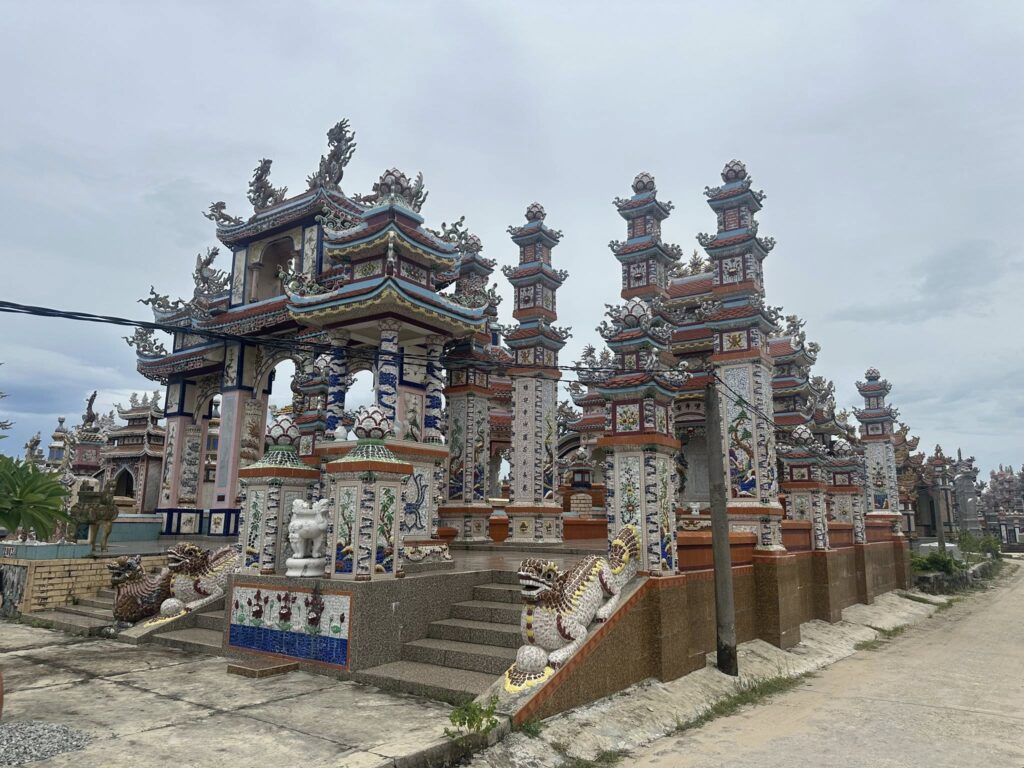
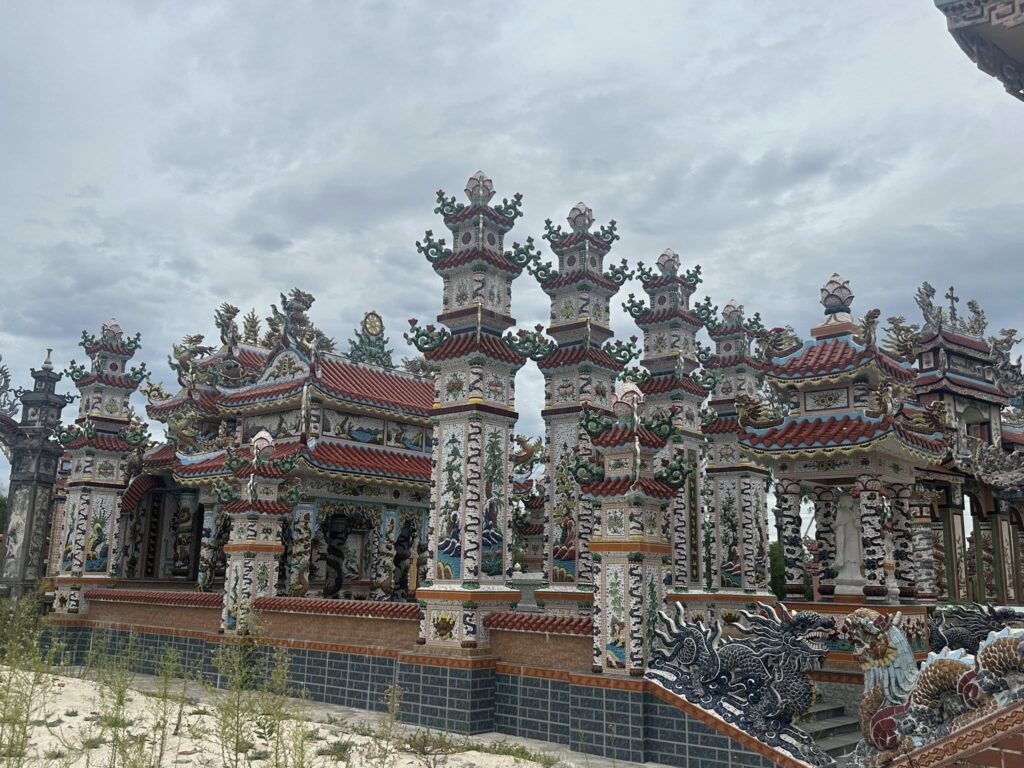
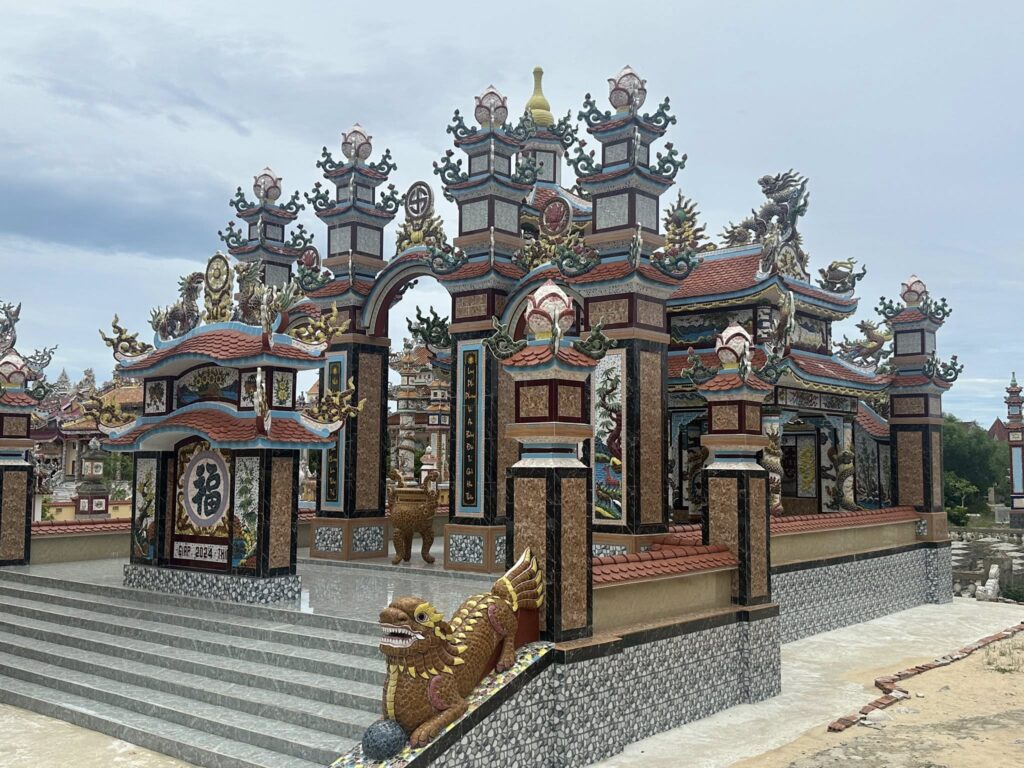
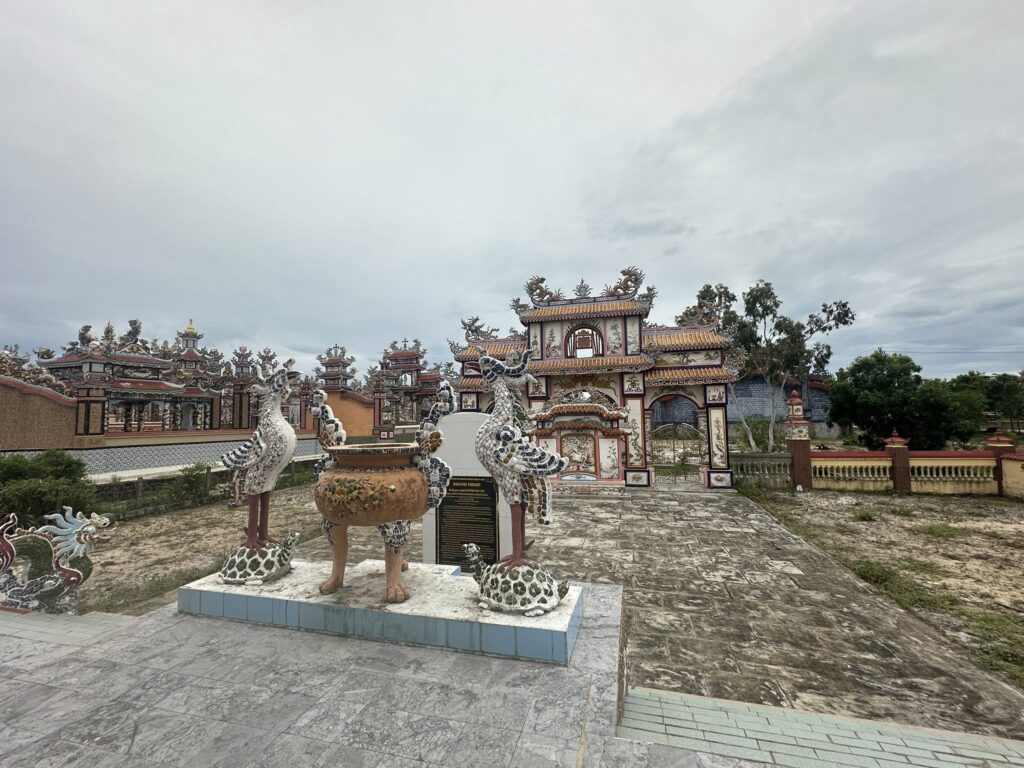
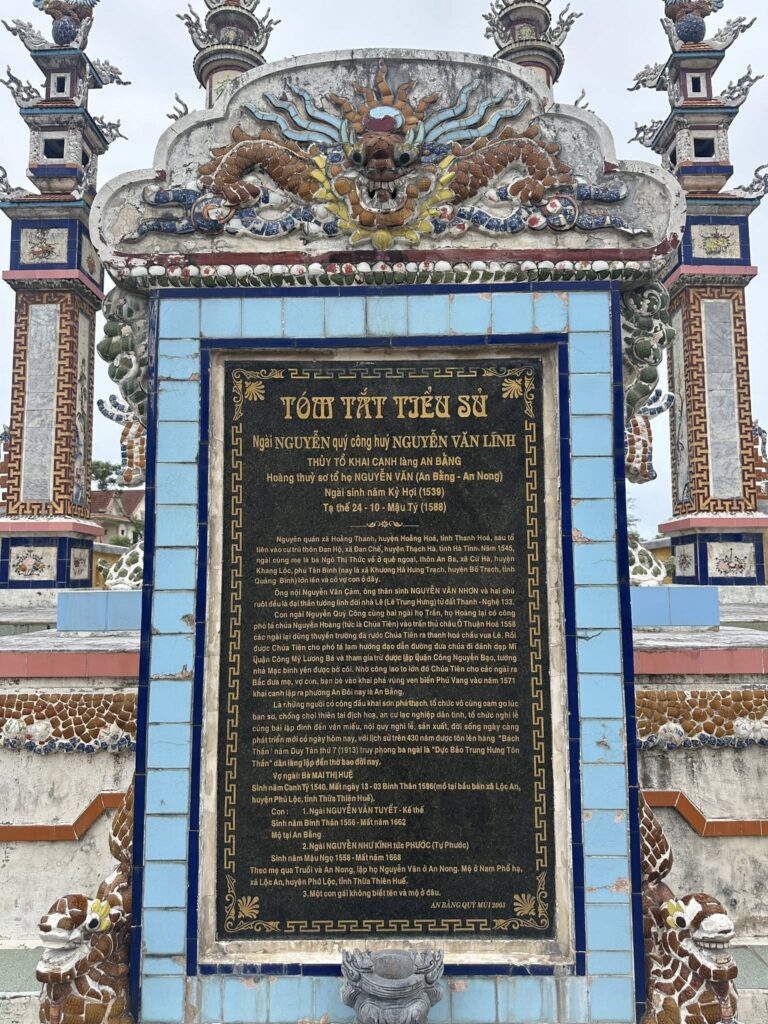
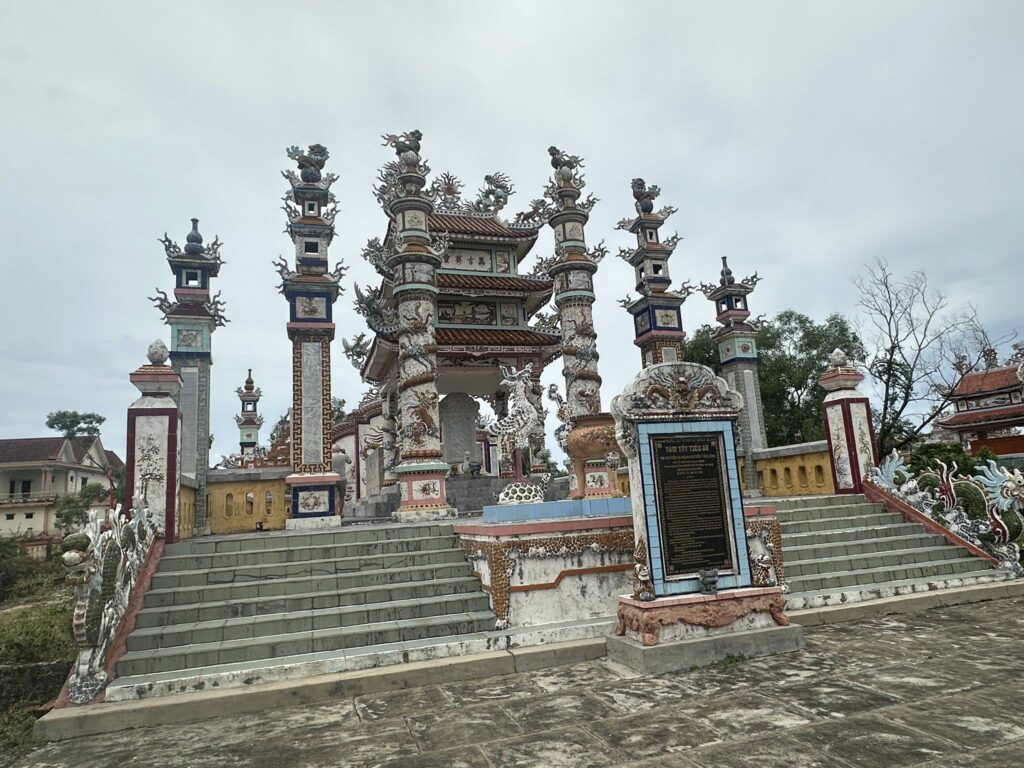
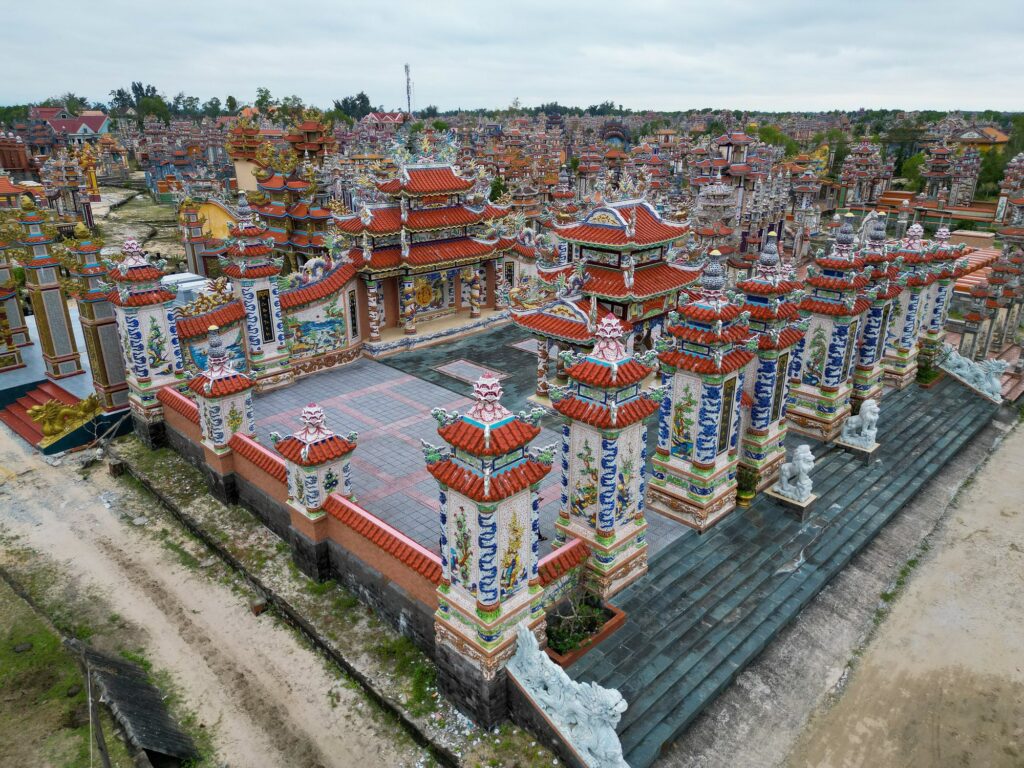
The Ghost City in An Bằng, Huế City – A Place for the Departed and the Soon-to-Depart
In the coastal areas of Huế City, there are many luxurious and magnificent cemeteries. Among them, An Bằng Cemetery stands out the most. It is considered one of the most extravagant cemeteries in the world.
From 1975 to 1989, many people from the coastal regions risked their lives to flee the country in search of a brighter future. Most of them were poor and had nothing to lose, so they dared to leave everything behind. They paid the price with their lives, in some cases. Those who successfully escaped lived in refugee camps, and many of them were later sponsored by third countries such as the United States and European nations through humanitarian programs. This gave them the opportunity to change their lives.
Most of these overseas Vietnamese (especially in the U.S.) worked hard and became wealthy. They sent money back to Vietnam to build houses and, notably, lavish tombs for their ancestors – even for their still-living parents or for themselves. This is how such a grand cemetery came to be. Truly, prosperity gives rise to elaborate rituals and traditions.
Geographical Location:
35 km east of downtown Huế City.
Timeframe:
The cemetery became well-known after 1990, when overseas Vietnamese were allowed to send money back to Vietnam.
Area:
Approximately 52 hectares. You can view images and data I’ve measured in the original post.
Orientation of the Tombs:
There is no dominant orientation. Most tombs face roads, alleys, or paths. The least chosen direction is west.
Architecture:
Since this is a communal cemetery for the people of An Bằng village, its architecture reflects a mixture of religious beliefs and local customs. Most tombs are modeled after the architecture of King Khải Định’s mausoleum, with decorative patterns and mythical creatures in bas-relief and inlaid with porcelain to enhance the aesthetic and spiritual value. Today, people also use paint, ceramic tiles, or various types of stone, making the designs more diverse and vibrant.
Burial Customs:
In Huế, families often invest in expensive and sturdy coffins. The deceased are buried once and not exhumed or relocated, unlike in northern Vietnam where reburial is common. Only in the highland areas like A Lưới do some ethnic minority groups practice reburial. Reburial only happens when the government reclaims land or when families voluntarily relocate graves to organize them more neatly or build more grandiose family tombs.
During burial or reburial, the traditional layout is: males on the left, females on the right.
Elder generations are buried toward the top, while younger generations are buried closer to the entrance.
Nearby Landmarks:
Close to the seaside and near the cemetery, there is a statue of the Virgin Mary, a statue of Guanyin (Bodhisattva of Compassion), and a shrine to the Whale God (Lăng Ngư Ông). Additionally, in the village, there are many ancestral halls (family temples), some of which are even more grand and splendid than the tombs.
Google Maps link: https://maps.app.goo.gl/QZedwgFTM9AGYKND7

